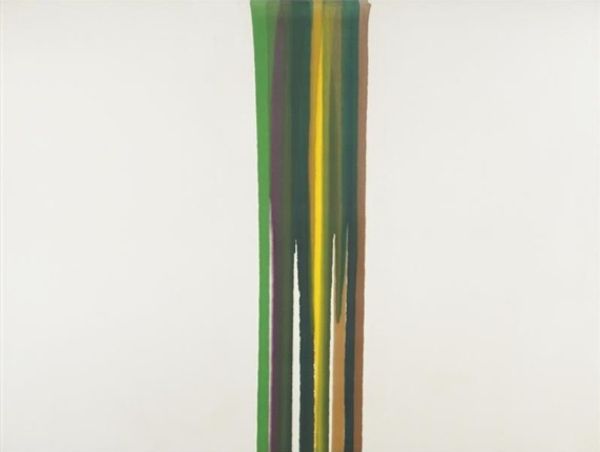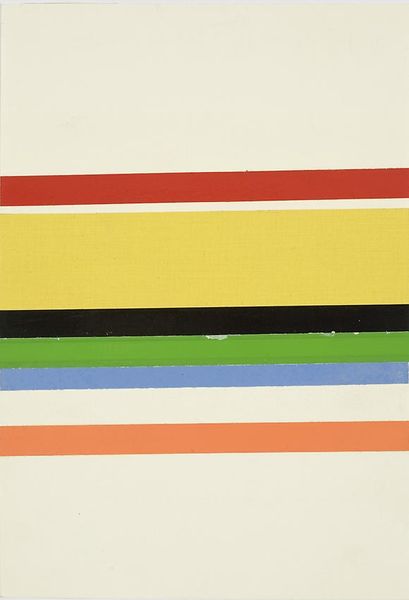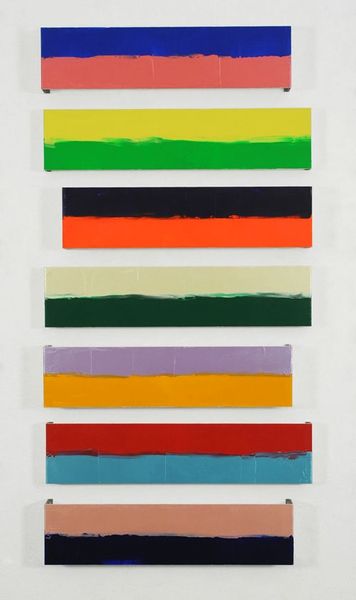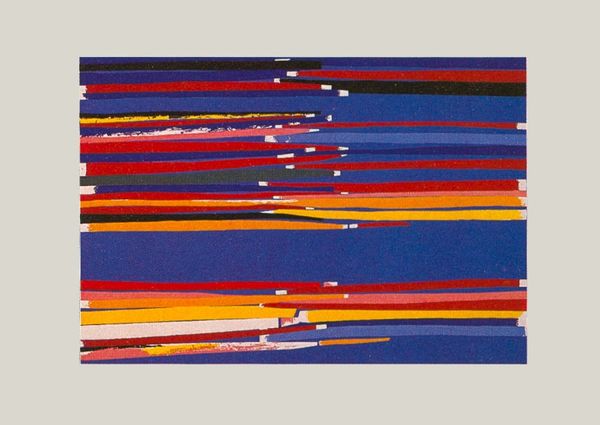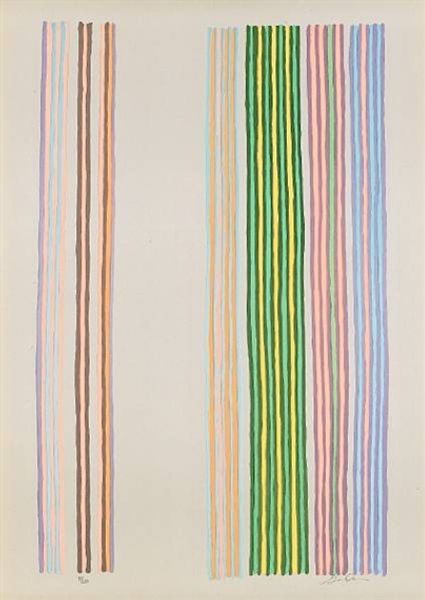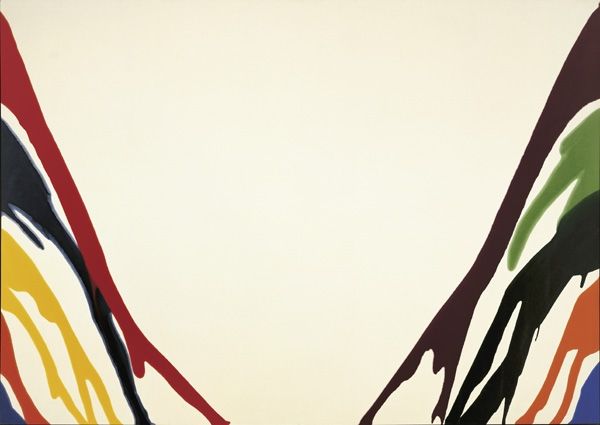
stain, acrylic-paint
#
abstract-expressionism
#
washington-colour-school
#
acrylic
#
stain
#
colour-field-painting
#
acrylic-paint
#
abstraction
#
line
#
watercolor
Copyright: Morris Louis,Fair Use
Morris Louis made this acrylic on canvas artwork, Number 28, sometime during the late 1950s in the United States. It represents an important moment in the history of art institutions when abstract painting had become an established, even officially sanctioned, form of cultural expression. The visual code here is simple: parallel bands of color, allowed to flow and stain the canvas directly. Yet these very qualities, embraced by Louis and others, were once considered radical departures from traditional painting techniques. Understanding Number 28 requires us to consider the social conditions that made such art possible. The rise of Abstract Expressionism and Color Field painting was intertwined with the Cold War context, where the seeming freedom of abstraction was promoted as a symbol of American democratic values, often in contrast to more socially engaged art forms. Art historical research, including period criticism and institutional records, can help us understand the complex interplay between artistic innovation and the broader cultural and political landscape.
Comments
No comments
Be the first to comment and join the conversation on the ultimate creative platform.





